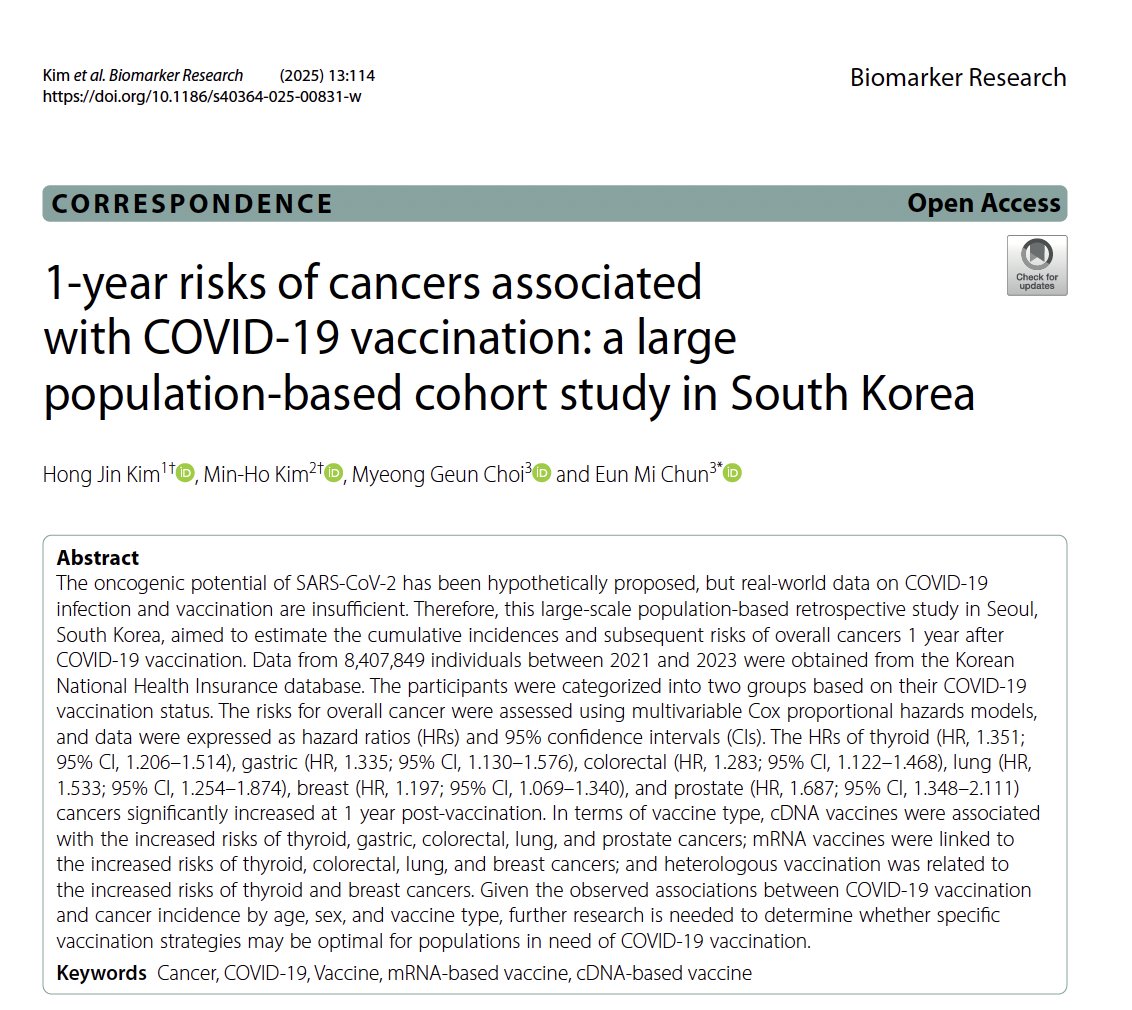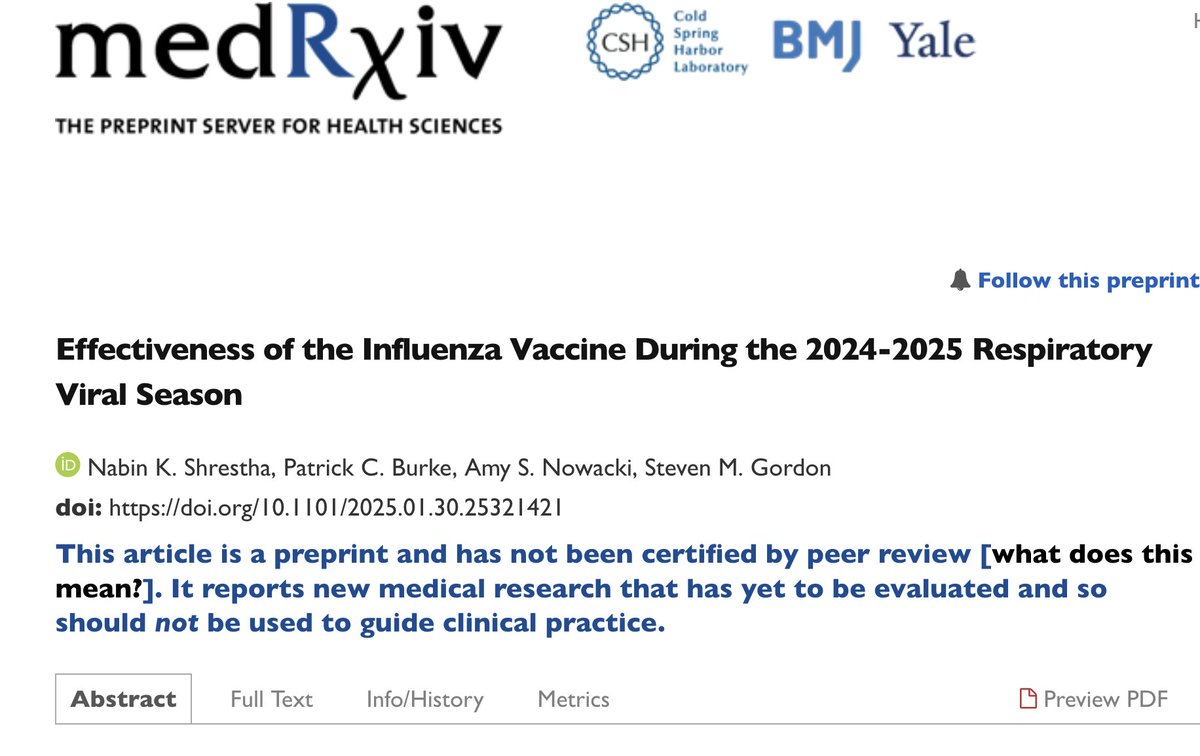The UK published all cause death data from 1/2/21-9/24/21 split out by vaccination status/age group: ons.gov.uk/peoplepopulati…
In young (10-59yr), all cause deaths in 2 dose group are ~2x higher than unvaccinated.
Does this mean the vaccines are "killing more than they save?"
In young (10-59yr), all cause deaths in 2 dose group are ~2x higher than unvaccinated.
Does this mean the vaccines are "killing more than they save?"

As I will show in this thread, this conclusion is erroneous, an artifact of Simpson's paradox, since the 10-59yr is far too wide an age range, and vaccination rate and death risk vary substantially from the younger to older end of the age range. 

To investigate this, I pulled some public data to try to adjust for the hidden age effects within the 10-59yr age group
First, note how widely the annual death rate per 1000 varies significantly from the young end to older end of the 10yr-59yr age group
ourworldindata.org/grapher/death-…
First, note how widely the annual death rate per 1000 varies significantly from the young end to older end of the 10yr-59yr age group
ourworldindata.org/grapher/death-…

Next, consider the variability in vaccination proportion over time across the various age groups, with the younger end of the 10yr-59yr age group having far lower vaccination rates than the older:
coronavirus.data.gov.uk/details/vaccin…
coronavirus.data.gov.uk/details/vaccin…

Here, I will focus on August 1, which is the end of week 30 with the annotated 1.82x ratio.
Note the extreme variability in vaccination rate, with those in their 40's and 50's much higher vaccination rates than 20's and 30's, and with few teens vaccinated as of 8/1/21.
Note the extreme variability in vaccination rate, with those in their 40's and 50's much higher vaccination rates than 20's and 30's, and with few teens vaccinated as of 8/1/21.

Also, note the population size of each semi-decade group is not the same, so we also consider the proportion of total UK population within each age group, here for UK from 2019:
populationpyramid.net/united-kingdom…
populationpyramid.net/united-kingdom…

Since we are only looking at the 10-59yr population, I normalize the proportions of each semi-decade age group, to yield the age distribution within the 10-59yr cohort. 

If we multiply the % vaccinated by % in that age group, we can get the proportion of the 10-59yr population the are (1) vaccinated and (2) in that age group. 

By subtracting from 1, we get the proportion of the 10-59yr population that are (1) unvaccinated (haven't gotten 2 doses) within each age group. (This is sufficient for our purposes -- later I will include more nuanced analysis incorporating single-dose vaccinated) 

Next, we will normalize each of those two columns by dividing by the respective sums (62.2% and 37.8%) to get the age distribution within the vaccinated and unvaccinated cohorts in the 10-59yr cohort. 

To make easier to see, I plot these age distributions.
Note that the vaccinated in the combined 10-59yr cohort are MUCH older than the unvaccinated.
Note that the vaccinated in the combined 10-59yr cohort are MUCH older than the unvaccinated.

Here I add in the annual mortality rate per 1k for each age group.
It is not hard to image why we would expect the combined 10-59yr vaccinated cohort to have higher all cause mortality rates than the combined unvaccinated 10-59yr cohort.
It is not hard to image why we would expect the combined 10-59yr vaccinated cohort to have higher all cause mortality rates than the combined unvaccinated 10-59yr cohort.

To compute the annual death rate per 100k in vaccinated/unvaccinated given their respective age distributions, we use a weighted average: multiplying the age-specific annual death rate and the % of the respective (vaccinated or unvaccinated) cohort in that age group. 

We add these numbers to our figure to include the expected annual number of deaths per 100k in each age group.
They are not too different from the 10yr-39yr age groups, but note the major differences in the 40-59yr groups driven by higher vaccination rates and mortality risk.
They are not too different from the 10yr-39yr age groups, but note the major differences in the 40-59yr groups driven by higher vaccination rates and mortality risk.

If we sum across all age groups, we see from the weighted average that the expected combined annual mortality rate for the vaccinated 10-59yr cohort is 184.3, and for the unvaccinated 10-59yr cohort is 75.5. 

Here we put the total numbers in our table.
The expected ratio of all cause deaths in the vaccinated to unvaccinated 10-59yr cohort is 184.3/75.6 = 2.44, driven by the extreme variability in age distribution in these cohorts, 2.44/1.82=1.34x higher than what was observed.
The expected ratio of all cause deaths in the vaccinated to unvaccinated 10-59yr cohort is 184.3/75.6 = 2.44, driven by the extreme variability in age distribution in these cohorts, 2.44/1.82=1.34x higher than what was observed.

Thus, the observed results are not surprising, even lower than expected given the dramatically different age distribution in the vaccinated and unvaccinated cohorts in the 10-59yr age cohort.
Thus, it is a result of Simpson's paradox, and not indicative of vaccine-caused deaths
Thus, it is a result of Simpson's paradox, and not indicative of vaccine-caused deaths

The older age groups are decade groups with reasonably consistent vaccination rates/death risks within them, so do not suffer such an effect. And all 3 other age groups have all cause death rate ~2x higher in unvaccinated than fully vaccinated (2 doses).
Here is 60-69yr
Here is 60-69yr

The older age groups are decade groups with reasonably consistent vaccination rates/death risks within them, so do not suffer such an effect. And all 3 other age groups have all cause death rate ~2x higher in unvaccinated than fully vaccinated (2 doses).
Here is 60-69yr
Here is 60-69yr

There are wonky results for the 1-dose vaccinated in these data, but I save this for a future thread ...
There might be some confusion about the tables I put together above
They are NOT plots of the all cause deaths in vaccinated and unvaccinated from the UK data set
They are calculations of expected death rates of vaccinated/unvaccinated based on their different age distributions
They are NOT plots of the all cause deaths in vaccinated and unvaccinated from the UK data set
They are calculations of expected death rates of vaccinated/unvaccinated based on their different age distributions
That is, if vaccines did not affect all cause death risk at all, either positively or negatively, the numbers in the table are what we would expect in the vaccinated and unvaccinated groups as a result of their (very different) age distributions.
And thus, we would expect based on the difference in age distributions, in week 30, the "vaccinated" subset of 10-59yr should have 2.44x higher all cause death rates than the "uvaccinated" subset 10-59yr even if vaccines did not have any effect on deaths.
Since what was observed was 1.82x, 1.33x lower than expected 2.44x, if anything these data suggest that vaccines are overall reducing all cause death rate within these age groups.
If we could stratify the 10-59yr by decade groups, we would see the unvaccinated death rates higher
If we could stratify the 10-59yr by decade groups, we would see the unvaccinated death rates higher
oh crap you are right -- I colored the legend backwards. Sorry about that :)
Here is a blog post going into more details on these data:
covid-datascience.com/post/what-do-u…
covid-datascience.com/post/what-do-u…
• • •
Missing some Tweet in this thread? You can try to
force a refresh




















